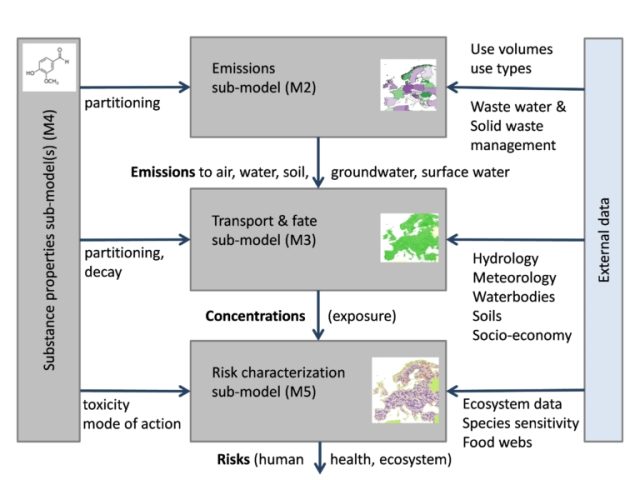D-Emissions
The key to solving surface water pollution is often a reduction of the emissions to surface waters. The first step in solving or mitigating many water quality and health problems is to get a quantitative overview of the emissions of substances. With D-Emissions, you can assess the quantity and spatial distribution of the emitted substances in a catchment. D-Emissions simulates the cause-effect chain, which allows for future scenarios and “what if” scenarios driven by policy projections and implemented measures.
Capabilities of D-Emissions
Typical research questions that are investigated with D-Emissions are:
- What is the runoff of substances to surface waters in an area?
- Where are the main sources of surface water pollution situated in a catchment?
- What is the impact of socio-economic developments on the water quality?
- How can environmental policies contribute to an improvement of the water quality?
D-Emissions computes the fluxes of substances being released from various sources of pollution to surface waters. Emissions modelling is a crucial element in the ‘source-to-sea’ modelling approach. In combination with simulation models for hydrology and surface water quality, the transport of substances can be modelled from the source in the upstream catchment to downstream delta areas and the sea.
D-Emissions is modelling software for profound studies on resilient and healthy water systems for people and nature.

Features of D-Emissions
D-Emissions makes use of relevant socio-economic drivers to compute a realistic spatial distribution of emissions. Its overall methodology has been derived from the Dutch Pollutant Release and Transfer Register.
D-Emissions:
- Is based on a source-oriented approach, as it is outlined in the Guidance Document issued by the European Union under the relevant Water Framework Directive Legislation.
- Has a mass balance approach, so all relevant emissions are accounted for, and double-counting of emissions is avoided.
- Responds to inter-annual hydrology variations such as peak discharges during heavy rainfall.
- Is flexible with respect to hydrological processes & models, substances, pathways, and sources. Computed emissions are varying in space and time.
Combine D-Emissions with other modules
D-Emissions is part of the Delft3D FM Suite. It can be combined with the D-Hydrology module, including the distributed hydrological model wflow and numerous lumped rainfall-runoff models.
The output of D-Emissions is input for the D-Water Quality module, which simulates the transport and fate in surface waters such as lakes, rivers, estuaries, and seas. D-Emissions has been coupled to the hydrological model HYPE by SMHI.
Availability of D-Emissions
The development of D-Emissions is ongoing. D-Emissions is applied by Deltares in research projects. This module is not yet available in the Delft3D FM Suite for beta testing. You can contact us for our beta testing programme.


